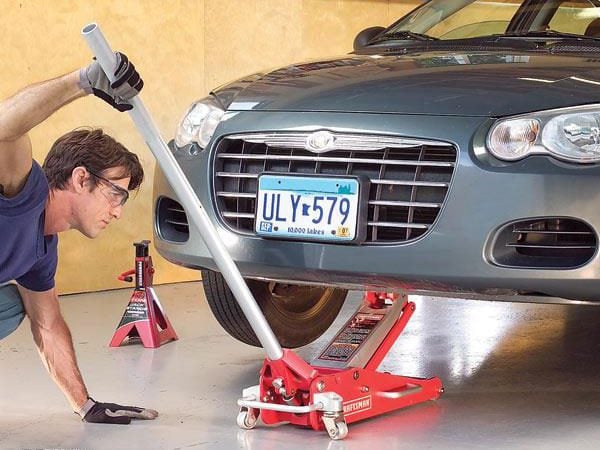
Tips on How to Safely Use a Car Jack
You can save quite a few bucks by jacking up your car or truck and doing your own repairs and maintenance. But if you want to live long enough to spend all the money you save, you owe it to yourself and your loved ones to bone up on jack safety.
Start by parking your car or truck on a flat concrete surface. Trucks and most SUVs have steel frames that support the entire vehicle. Nearly all cars, on the other hand, are of “unibody” construction; that is, they don’t have a frame. So each type of vehicle requires different points of support for jack and jack stand placement.
Consult a repair manual to locate the recommended lift points and support locations for your vehicle. Repair manuals are available at auto parts stores or online. Before jacking, engage the parking brake and chock the rear wheels to prevent car movement. Start jacking from the front of the vehicle. The front end of four-wheel-drive trucks can be raised by placing the jack under the differential. For two-wheel-drive trucks, place the jack beneath the jacking pad under the engine.
Place the jack so the cross member or differential lines up with the recessed area of the jack saddle. Slowly pump the jack handle until the front wheels leave the ground. Then stop jacking and doublecheck the jack placement. Look at the front of the vehicle to make sure it’s not leaning to one side. If it is, lower and recenter the jack. Otherwise, continue pumping until the vehicle reaches the desired height.
Support the front of a truck by placing the jack stands directly under the frame. Support the rear of the truck with a jack stand under each axle. Turn the handle very slowly until the vehicle starts easing down. A quick release will result in a sudden catastrophic drop. Lower the car or truck until it almost touches the saddle of the jack stand. Then make final alignment adjustments before lowering the full weight onto the stand. Remove the floor jack and bring it to the rear of the vehicle. Locate the recommended rear lift point and repeat the jacking procedure at the rear of the vehicle. Place the two rear jack stands in proper support locations and lower the rear onto those stands.
With the vehicle up on all four jack stands, gently shake the vehicle side to side and up and down. This ensures that the vehicle is sitting squarely on the jack stands and that the jack stand saddles have full contact with the support points. If the vehicle wobbles, stop immediately and reposition the problem jack stand before crawling under the vehicle.
Tip: If you plan to remove your tires, loosen the lug nuts slightly while the car is still on the ground. That’ll keep the wheels from spinning while you turn the lug wrench once the car’s raised.
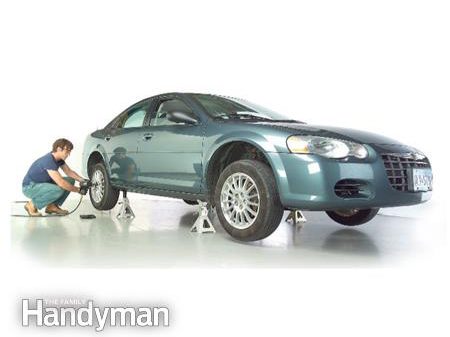
How to Jack and Support a Car: Step 1
Cars have unibody construction, and each type will have different support points for the jacks.
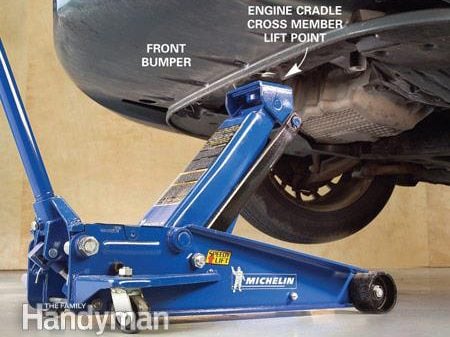
How to Jack and Support a Car: Step 2
For most cars, the recommended front lift point is the engine cradle cross member. Lift and support the front of the car first. (If you start with the rear, the front end may be tilted so far that you can’t roll a jack under it.)
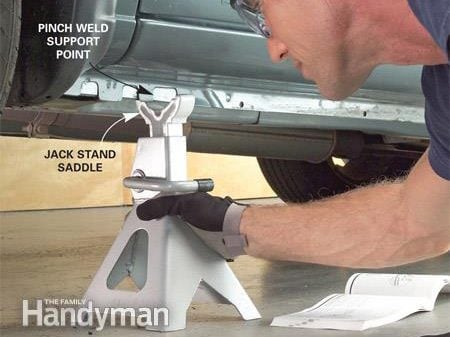
How to Jack and Support a Car: Step 3
Place the jack so the cross member lines up with the recessed area of the jack saddle. The jack stand support locations (pinch welds) for cars are usually located behind the front wheels and in front of the rear wheels.
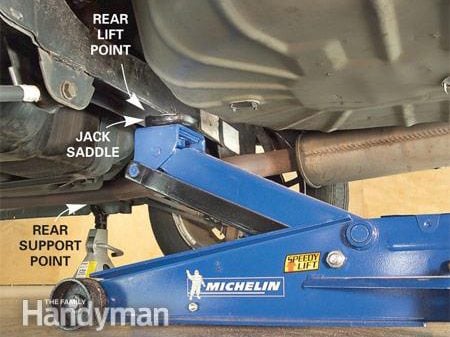
How to Jack and Support a Car: Step 4
Place the floor jack so it contacts the rear lift point and raises the vehicle.
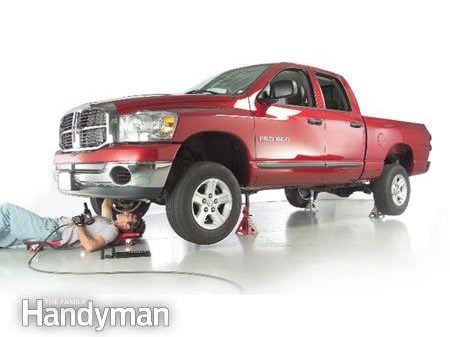
How to Jack and Support a Truck: Step 1
Trucks have different jacking points than cars.
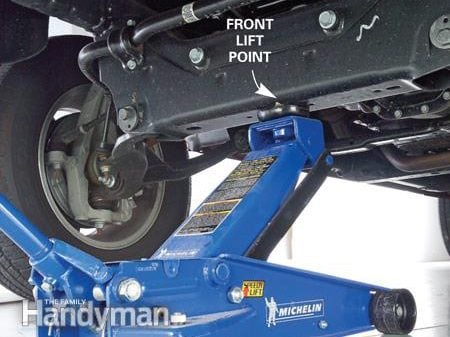
How to Jack and Support a Truck: Step 2
Place the jack directly under the truck’s front lift point. For two-wheel-drive trucks, place the jack beneath the jacking pad under the engine. On four-wheel-drive trucks, place the jack under the front differential.
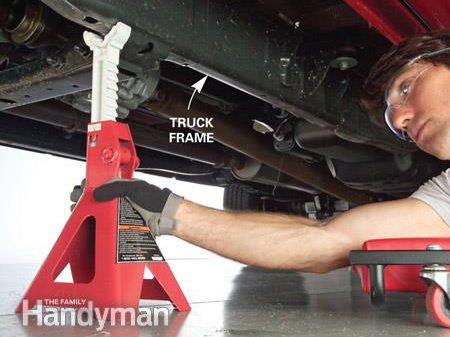
How to Jack and Support a Truck: Step 3
Always place the front jack stands directly under the frame on any type of truck.
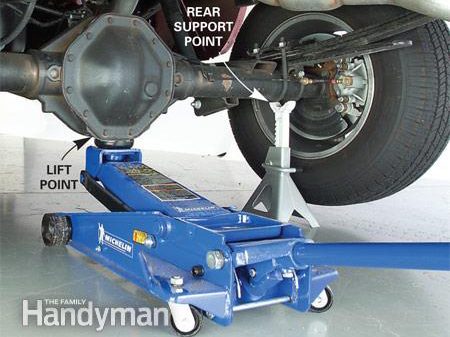
How to Jack and Support a Truck: Step 4
Support the rear of the truck with jack stands under each axle. Position the jack saddle directly under the rear differential.
Check out more do-it-yourself car maintenance tips!
Explore Reader’s Digest Cars.